War is always shaped by the environment in which soldiers fights. Weather, terrain and landmarks significantly impact combat operations, particularly in unfamiliar territories. For the American forces serving in Vietnam, these environmental challenges were particularly severe. They had to navigate dense jungles filled with dangers, from Viet Cong ambushes to hazardous wildlife.
Beyond the immediate threats posed by the jungle’s thick vegetation and wildlife, the environment itself presented serious health risks. Swarms of mosquitoes, many carrying malaria, were everywhere, while the rugged, wet terrain frequently led to debilitating foot conditions. Contaminated water sources also posed a major threat, often causing illness and infection.
Throughout the conflict, many soldiers fell victim to non-combat hazards, some of which are listed below.
Man-eating wildlife
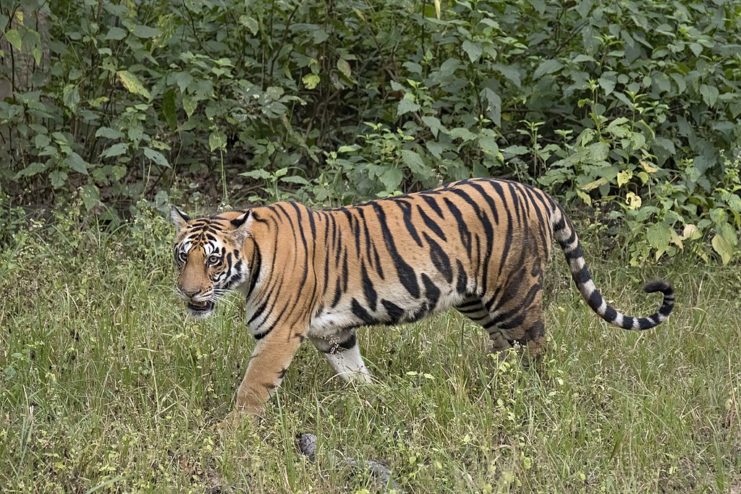
Tigers, crocodiles and elephants – oh my! Plants and hard-to-see insects aren’t the only dangers lurking in the Vietnam jungle. Crocodiles lurk in the water, and elephants can charge unprovoked.
On December 22, 1968, a massive tiger stalked a team from the 3rd Marine Recon Battalion as they performed a routine patrol. While the team of six were waiting for a helicopter to take them back to base, bad weather meant they had to spend the night in the jungle. While two sat on guard, the other four went to sleep. That’s when the tiger attacked one of them.
PFC Roy Regan was sleeping next to the victim of the attack, and later recalled, “I jumped up and saw the tiger with his mouth around my partner. All I could think about was to get the tiger away from him. I jumped at the tiger and the cat jerked his head and jumped into a bomb crater ten meters away, still holding his prey.”
The men leapt into action and began firing their guns at the animal, who released its prey and allowed the Marine to crawl out of the crater. When the helicopter arrived in the morning, its crew found an injured comrade, the other five men and a dead tiger.
Killer plants
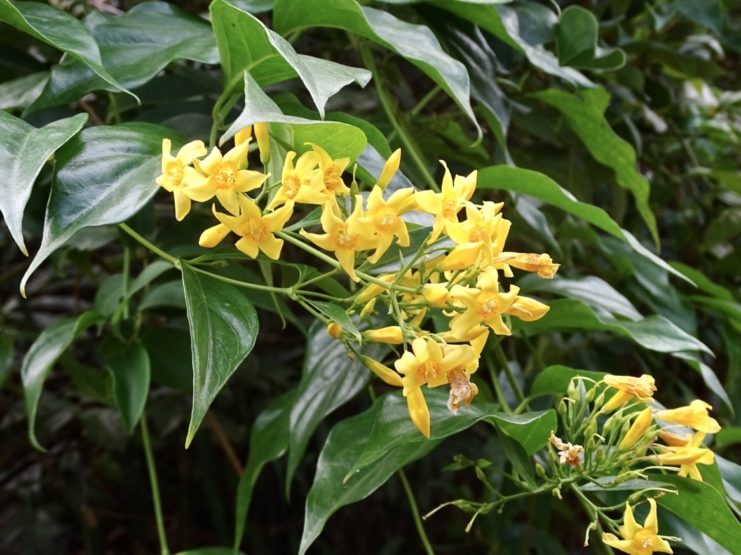
Navigating the thick and tangled brush of the Vietnam jungle could mean life or death for some soldiers. The hostile environment was a maze of dangerous animals, hidden assassins and plants that could maim or even kill. Heartbreak grass, or gelsemium, is an unassuming but poisonous plant that claimed many lives.
The plant contains a compound similar to strychnine and its effects can be felt almost immediately, eventually leading to death by asphyxiation. Despite its killer reputation, accidentally ingesting heartbreak grass occurs quite regularly and has been in the news over the last few years in relation to the suspicious death of a Russian whistleblower in 2012.
Stories of the “wait-a-minute” vine, or rattan plant, were also prolific among soldiers trudging through the Vietnam jungle. Tim Lickness, who arrived in Vietnam in 1968 with the 101st Airborne Division, described the vine’s ability to “grab you” and “suspend you in the air.”
Wait-a-minute vines come from a plant that grows long cable-like arms that easily hook onto and even tear skin and clothing, eventually wrapping you in an inescapable net. While these plants were only encountered off trails, many units decided to risk trudging through them to avoid trip wires, since the vines made it impossible to set traps.
Another plant known as elephant grass was so sharp, it would leave painful cuts on soldiers’ skin. The razor-sharp plant is practically impenetrable – we can only imagine the dread one would feel when a patch of elephant grass crosses their path.
Venomous snakes
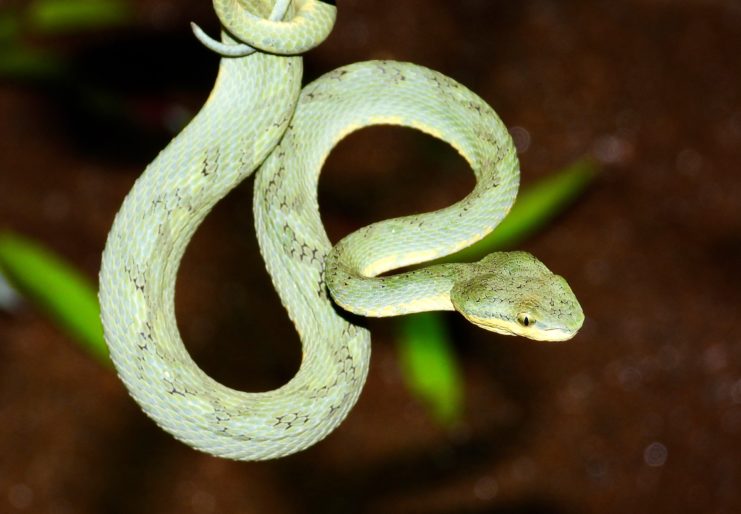
Venomous snakes are among the most perilous inhabitants of the Vietnam jungle. According to the US National Archives, around 25-50 American soldiers fell victim to snakebites each year during the Vietnam War. While not every serpent encountered in the jungle is venomous, two particular species are commonly encountered – and meeting them is ill-advised.
The yellow-bellied bamboo pit viper earned the moniker “two stepper” from American troops, owing to its potent venom capable of incapacitating in just a couple of steps. Though the effects of its venom typically require more than two steps to prove fatal, its lethality is undeniable.
These snakes were employed as insidious tools of warfare by the Viet Cong, who would suspend them from tunnel ceilings. When a soldier ventured into a tunnel in search of explosives or hidden adversaries, a mechanism would release the snake, dropping it onto their unsuspecting head.
King cobras also featured prominently in the landscape of the war. One of the largest venomous snakes globally, it can grow up to four meters in length. Troops encountered them in the jungle, rice paddies, latrines and even coiled up on helicopter seats.
Dale Vaughn, a door gunner with the 114th Assault Helicopter Company, 1st Aviation Battalion, happened upon a juvenile cobra that he adopted as a pet. Safely nestled in a cooler beneath his cot, he christened the reptile “O,” inspired by the prominent white marking on the back of its head.
Aggressive insects
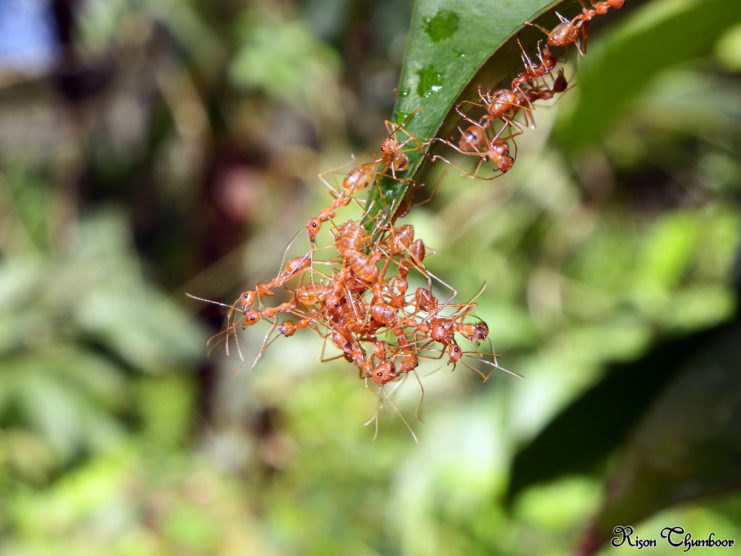
American troops, who dubbed these creatures “Communist ants,” due to their red color and aggressive behavior, faced a serious threat from weaver ants in the Vietnamese jungle. A single misstep often triggered a swift attack from these colonies, which seemed determined to retaliate. Despite efforts by the Army to combat them with insect repellent, the ants remained undeterred. While their bites weren’t venomous, they inflicted intense pain.
In addition to the ants, soldiers frequently encountered the Vietnamese centipede, a creature that could grow up to eight inches long. Its bite caused severe pain and, in some cases, could be deadly. Along with scorpions and spiders, these were among the largest and most dangerous insects American soldiers had to contend with in the dense jungle.
Veit Cong tunnels
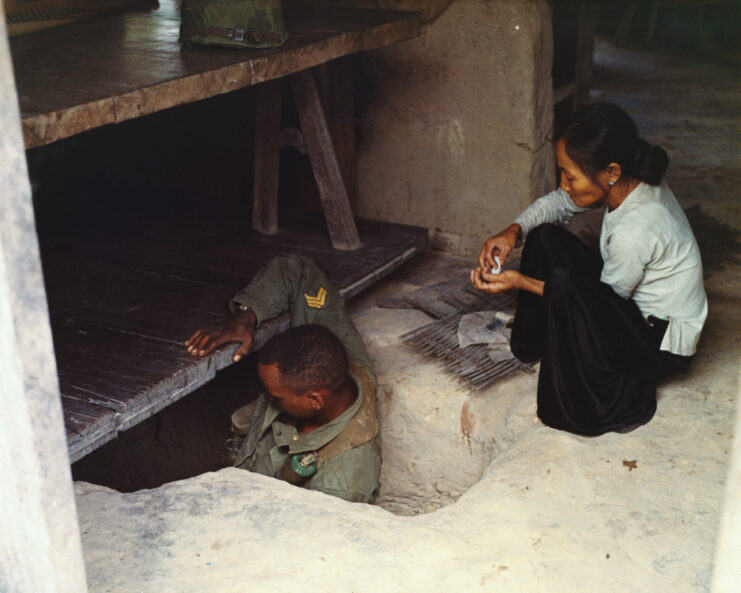
The Viet Cong had a major advantage in the dense jungles of Vietnam, not just through their strategic positioning but also via their extensive network of secret tunnels and booby traps which were a frequent and deadly occurrence. These tunnels, came from the earlier conflict between the Viet Minh and France over colonial dominance in Vietnam, stretched for miles and included everything from medical facilities and ammunition caches to living quarters. Equipped with food, water, and a sophisticated ventilation system, they allowed Viet Cong members to stay hidden there for long periods of time.
While American soldiers navigated the jungle on foot, the Viet Cong used their tunnel system to move quickly and avoid the environmental hazards and potential enemy threats. This intricate network also served as an ideal base for launching surprise attacks.
US forces attempted to neutralize these tunnels using explosives or by flooding them with gas and water, but these methods proved inadequate due to the Viet Cong’s design, which prevented major damage and flooding. To effectively clear the tunnels, specialized volunteers known as “tunnel rats” ventured inside with only a flashlight and a weapon. The confined spaces were fraught with booby traps, including grenades, gas, trap doors, flooding mechanisms, and even venomous snakes.
Viet Cong traps
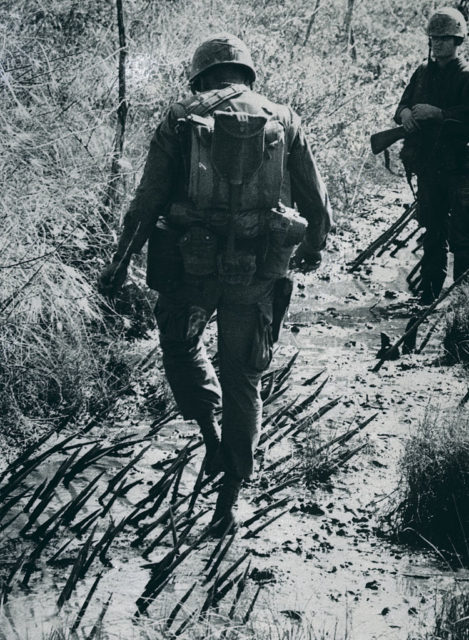
As if the Vietnam jungle wasn’t enough for US soldiers to contend with, they also had to be on the lookout for traps laid by the Viet Cong. The aim of these was to maim, not kill, American soldiers, as it forced an entire unit to slow down while aid was applied. Not only did they cause physical injury, they also had a psychological effect, reducing morale.
Among the most notable traps deployed by the Viet Cong were Punji sticks, which were sharpened bamboo stakes that stuck out of the ground and were covered in either feces, urine or poison. This ensured that those who encountered them not only suffered a cut from their sharp points, but also an infection that kept them out of commission.
The swinging mace was also another formidable trap. Triggered by a tripwire, it was a heavy clay ball covered in spikes, which would cause serious injury to the upper portion of a soldier’s body. It was similar to the bamboo whip, a pole with spikes attached to it. When triggered, the trap could travel up to 100 MPH, inflicting a lot of pain.
More from us: John McCain Survived Being Imprisoned By the North Vietnamese for Over Five Years
New! Want to become a trivia master? Sign up for our War History Fact of the Day newsletter!
A final noteworthy trap deployed by the Viet Cong was the the rudimentary grenade-in-a-can. As its name suggests, it was made up of an active grenade placed within a can. Depending on the location, this type of trap was made up of one or two grenades, with the latter connected by a tripwire.
